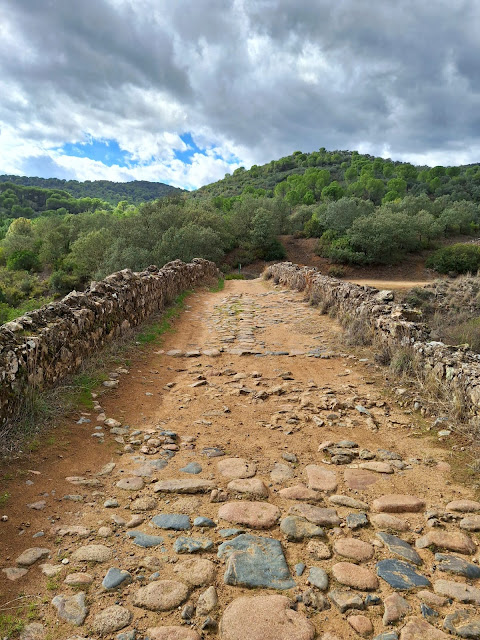In the Sierra Morena just 8 kilometres from Cordoba is
Los Villares Park. It is a popular site for people from the city to go for a
barbecue, a walk along one of the marked paths or a weekend of camping. And at just
under 500 hectares, it supports a wide range of flora and fauna.
One of the most surprising animals to be found here is the
Egyptian Mongoose. They are diurnal animals and opportunistic hunters, feeding
on birds, insects, reptiles and fish. They are rarely seen as they sulk silently through the undergrowth but the best opportunity to spot them is often when they come to water
sources to drink in the hotter summer months.
 |
Egyptian Mongoose enjoying a drink on a hot summer day
|
 |
Siesta time
|
Similarly stealthy and wily are foxes, which can be seen
in this part of the Sierra Morena often in the early morning or late evening.
 |
| Fox |
Water will attract all sorts of wildlife and the streams
that run through the park are vital to a whole array of animals in the summer.
Iberian Hares will come to drink and if you wait patiently near a water source you will have a good catch to see the shyer bird species that live here, such as the Cirl
Bunting.
 |
Iberian Hare
|
 |
| Cirl Bunting |
The Iberian Green Woodpecker will make use of its
extraordinarily long tongue to reach the water in a pond. Measuring about 10cm
long, it is normally used to reach into ant nests to get to one of its
favourite foods. Its tongue in fact is so long that it coils behind the skull,
over the eyes and into its nostril
 |
Long tongue of the Green Woodpecker
|
And of course where there is water you will find insect
life, such as this Epaulet Skimmer dragonfly.
 |
| Epaulet Skimmer |
In the carpark in Los Villares you are sure to see and hear the resident band of
Azure-Winged Magpies with their powder blue wings and tail. I have counted over 60 birds together here on one occasion.
 |
Azure.winged Magpie
|
One of the nicest walks in the park is the Botanical Path, which loops
through Oak and then Pine forest. Here we can see typical woodland species such
as Blue Tits, Great Tits, Long-tailed Tits, Robins, Great Spotted Woodpeckers, Jays
and Sparrowhawks. And when the trees open up and we look up it is not
uncommon to spot a passing Griffon Vulture .
 |
Great Tit
|
 |
Long-tailed Tit
|
As the seasons change, so too do the species we can fid. In spring
and early summer we can see Golden Oriels, which despite their bright yellow plumage blend in incredibly well in the foliage. Bonelli's and Subalpine Warblers breed here as does the increasingly endangered Turtle Dove.
 |
Bonelli's Warbler
|
 |
Subalpine Warbler
|
 |
Turtle Dove
|
As summer draws to a close Honey Buzzards often pass through this part of the Sierra Morena on their migration south. September and October sees
large numbers of Spotted Flycatchers stopping off to feed here before making the trip to southern Africa.
 |
Spotted Flycatcher
|
















































